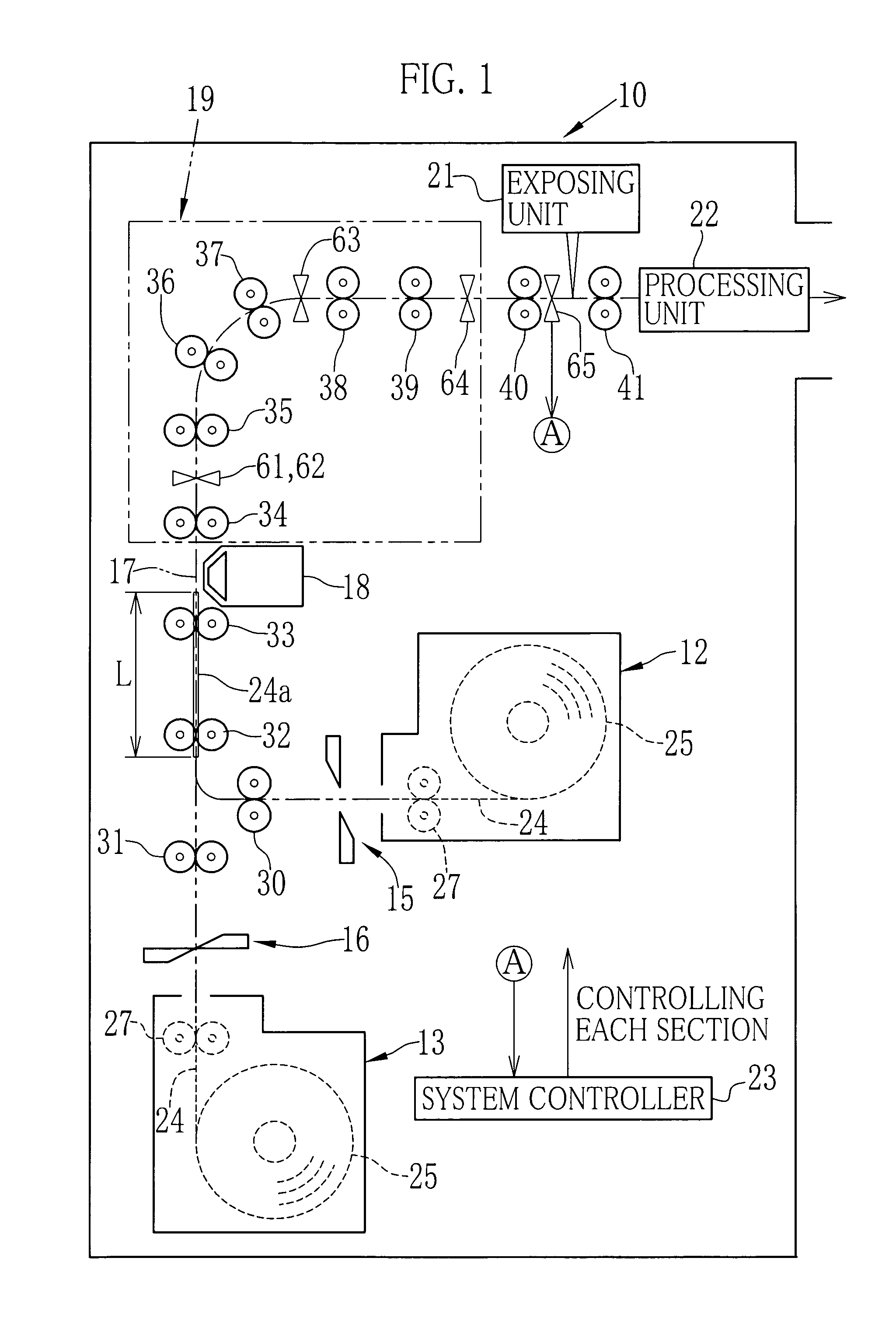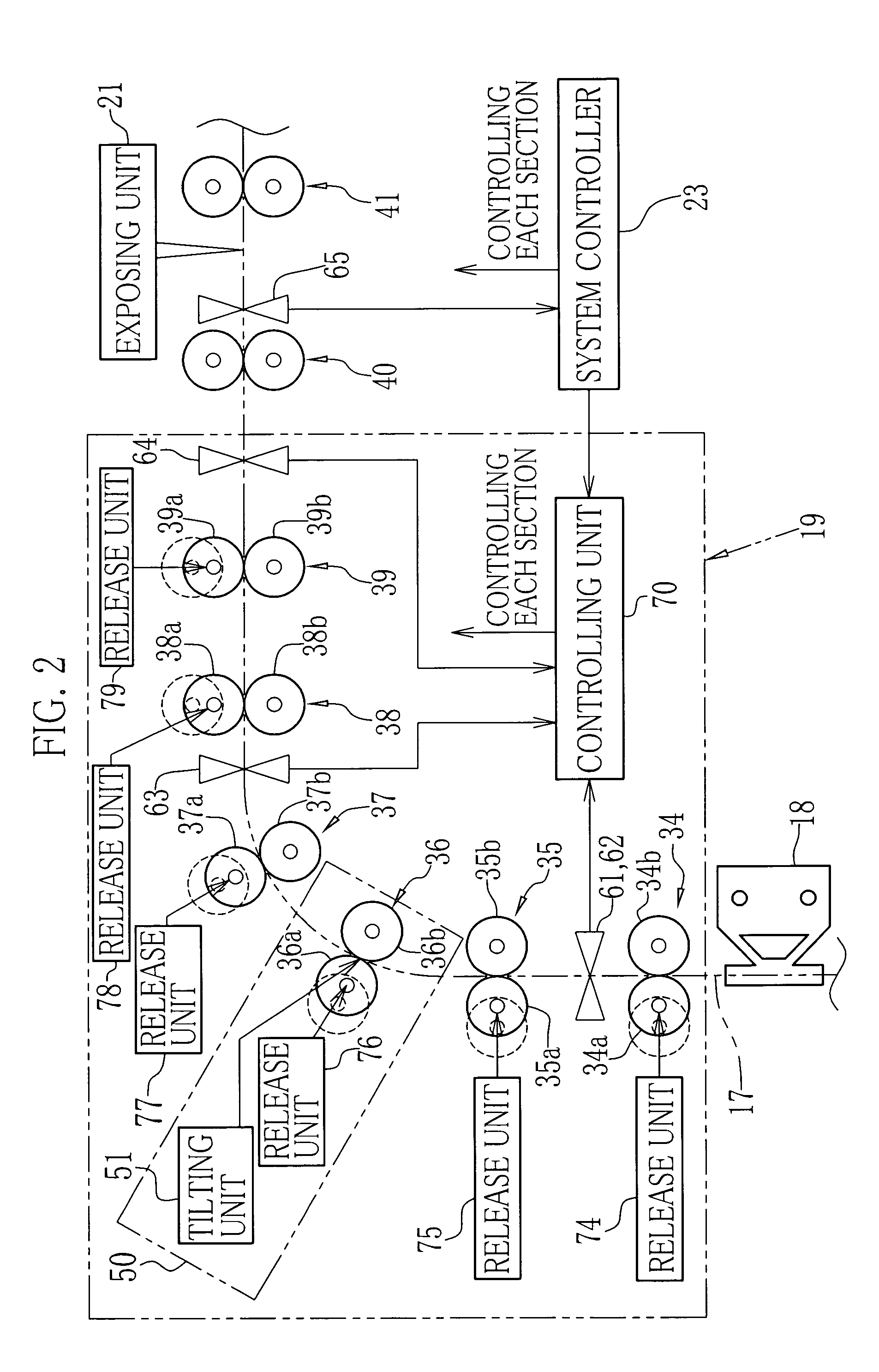Sheet carrying device with tilted skew correction and force releasing carriers
a technology of skew correction and carrying device, which is applied in the direction of thin material handling, printers, instruments, etc., can solve the problem of inability to correct skew, and achieve the effect of avoiding skew correction amount, and being easy to control
- Summary
- Abstract
- Description
- Claims
- Application Information
AI Technical Summary
Benefits of technology
Problems solved by technology
Method used
Image
Examples
example
[0124]As described above, in the carrying device 19, the roll widths of the carrying roller pairs 34 to 39 are narrower than the shortest width of the photosensitive material to be used in the photographic printer 10. Thus, the skew-correction properties of the skew corrector 50 are independent of the widths of the photosensitive materials 24a. In view of this, is described below only a case in that the photosensitive material having a width size of 89 mm is used.
[0125]FIG. 15 is a graph showing relationships between tilt amounts and skew amounts in a case that the nips of the carrying roller pairs 35 and 36 are released in accordance with the feed lengths L (ten sorts of 80 mm to 350 mm) of the photosensitive materials 24a. The horizontal axis represents the tilt amounts of the carrying roller pair 36. The vertical axis represents angles (deg.) of the photosensitive material 24a skewed by the carrying roller pair 36.
[0126]When the distance from the fulcrum PA to the edge of the car...
PUM
| Property | Measurement | Unit |
|---|---|---|
| length | aaaaa | aaaaa |
| width | aaaaa | aaaaa |
| width | aaaaa | aaaaa |
Abstract
Description
Claims
Application Information
 Login to View More
Login to View More - R&D
- Intellectual Property
- Life Sciences
- Materials
- Tech Scout
- Unparalleled Data Quality
- Higher Quality Content
- 60% Fewer Hallucinations
Browse by: Latest US Patents, China's latest patents, Technical Efficacy Thesaurus, Application Domain, Technology Topic, Popular Technical Reports.
© 2025 PatSnap. All rights reserved.Legal|Privacy policy|Modern Slavery Act Transparency Statement|Sitemap|About US| Contact US: help@patsnap.com



